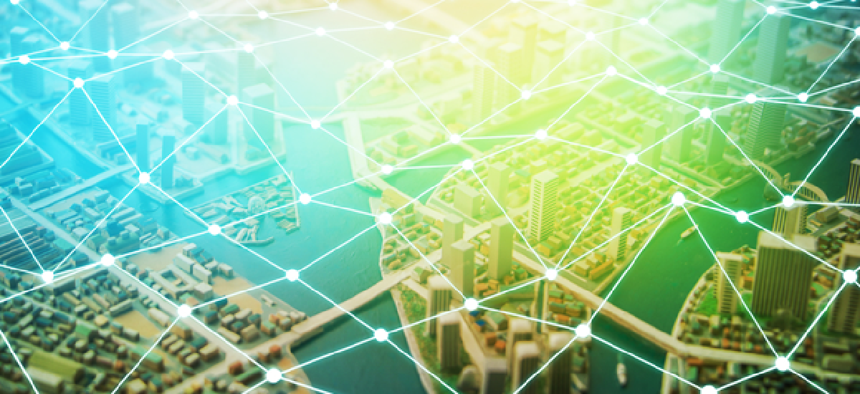Driving the future of smart cities with IoT


Connecting state and local government leaders
A new generation of IT systems based on internet-of-things technologies can carry smart cities development farther and faster than originally imagined.
Who knew 10 years ago that small sensors would make a big idea like smart cities even bigger?
The concept of smart cities has been around for nearly a decade. It’s always been about delivering better, more efficient and affordable services at the level of government that has the closest connection to constituents’ daily lives. But it has gone through some dramatic twists and turns with the emergence of key enablers like the internet of things.
Improbable but true: the first IoT device was a connected toaster. But the idea of connecting sensors to everyday devices that collect and transmit data on the item’s status and operation has become an incredibly powerful business tool, with 8.4 billion connected things in use worldwide in 2017, according to Gartner.
Those numbers underscore the potential for a new generation of IT systems to carry smart city development farther and faster than some if its originators may have imagined.
IoT systems are versatile and reliable enough to support an astonishing range of municipal goals and objectives. With sensors attached to most every vehicle, device or piece of equipment a city relies on daily, IoT can drive a more sophisticated approach to enterprise asset management, delivering greater reliability at considerably less cost. The technology can foster collaboration across departments and divisions or between a city or regional government and its private sector partners. It can produce invaluable data for an array of business intelligence systems -- from parking management to crime prevention, from emergency services to facilities maintenance. It can support the drive within a modern, cloud-based enterprise resource planning system to break down silos across a large, complex organization.
And if today’s capabilities are exciting, the future is breathtaking.
With multiple emerging technologies developing in parallel and at exponential rates, cities of the future will need the central IT capacity to keep multiple systems in sync, while enabling sophisticated new opportunities to flourish.
Ever evolving software and devices have created massive new opportunities for governments to leverage business intelligence. With sensors collecting information, enterprise resource planning systems processing it and BI systems to interpret it, tomorrow’s smart cities will be able to make better, faster decisions to deliver the services citizens need at lower cost.
The IT behind smart cities will also be an essential enabler for the hot, new technology that is on everybody’s radar: connected and autonomous automobiles. The benefits begin with a much safer, more secure and reliable transit from Point A to Point B. Add some of the potential gains that city planners have ascribed to driverless cars -- like reduced highway congestion, or an end to the daily scramble for a downtown parking spot -- and IoT emerges as the key piece of the puzzle that holds all the others in place. But the dream won’t become a reality without reliable infrastructure and the technology systems that connect the vehicles and the infrastructure.
Smart cities need smart partners
Those who have been wondering how municipal or regional governments can make the leap from today’s systems to tomorrow’s are not alone.
The latest Infrastructure Report Card published by the American Society of Civil Engineers gave the country’s physical assets a D+ rating, which might explain why only 6 percent of the country’s most populous cities have had the wherewithal to include future technologies like autonomous vehicles in their long-term plans, according to the National League of Cities.
The biggest challenge of all is to get from here to there. Cities have no time to waste and will have to stretch every dollar to the fullest to get the transition done. Partnerships with smart, responsive IT providers will be a necessary building block for every city planner’s success.
It’s time for communities to put the IoT at the center of that quest and to line up the support and partnerships they’ll need to get the job done.

NEXT STORY: When digital service teams hit innovation hurdles




